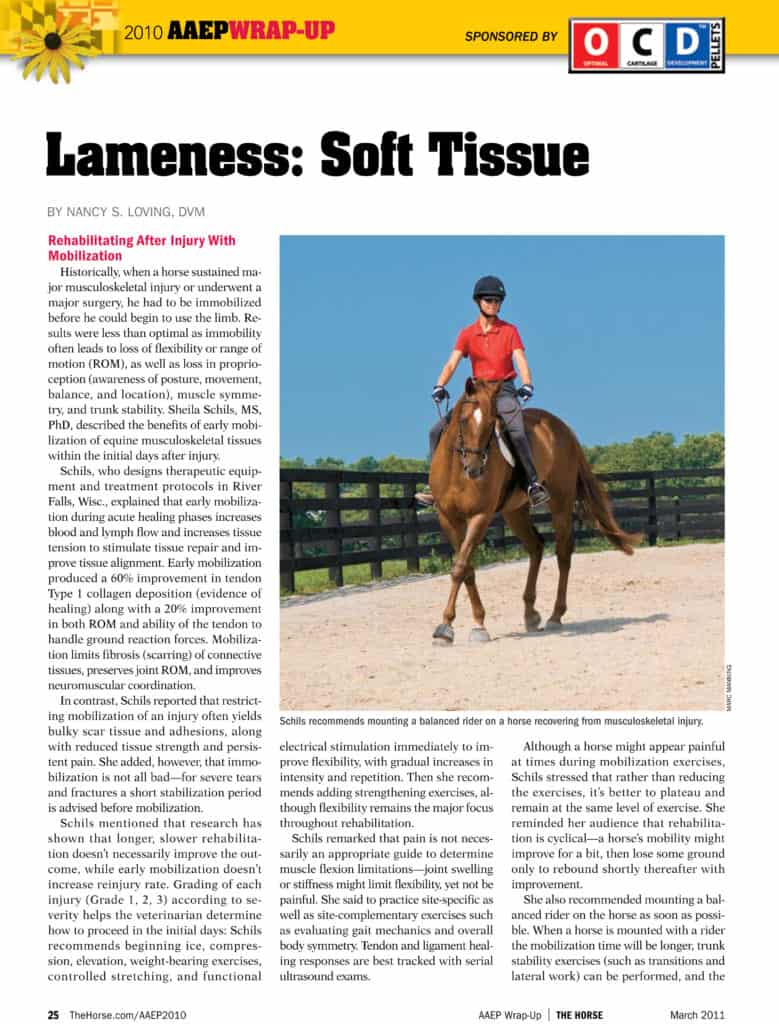
Equine Gait Abnormalities as a Diagnostic Tool
Some disorders produce gait abnormalities and lamenesses that aid in a quick and accurate diagnosis.

Some disorders produce gait abnormalities and lamenesses that aid in a quick and accurate diagnosis.

The first step in managing an equine foot problem successfully is to attain an accurate diagnosis.

Some veterinarians are adding a new tool to their lameness diagnosis arsenal

One researcher says that it is very rare to see a spontaneous quarter crack not associated with sheared heels.

Developments in equine lameness research, discussed during the 2011 AAEP Convention in San Antonio, Texas. Topics included tendon/ligament injuries, microstructural alterations, navicular bone degeneration, bone marrow-derived stem cells, and more.
The summit will offer 68 hours of hoof care education focused around the theme “Zeroing in on Soundness.”

Go back to basics to understand what ataxia is and how to diagnose the cause for ataxia in affected horses.
Sue Dyson, MA, VetMB, PhD, DEO, FRCVS, and Chris Gregory, CJF, FWCF, will present at the lecture in January.
Attendees discussed hoof lameness, club feet, track surface’s effect on lameness, back and neck pain, and EPM.
Equine lameness exams, regenerative medicine, podiatry advancements, and case studies will be discussed.

Healthy hooves are paramount to a horse’s soundness. This fact sheet lists some common hoof problems, such as hoof abscesses, quarter cracks, bruises, navicular syndrome, underrun heels, and thrush, and how to identify, manage and prevent them.

To get to the bottom of subtle performance-limiting gait abnormalties, vets must consider every puzzle piece.
As we step back from our machines and relearn the art of looking at the equine patient as a whole we might realize that some of the most complicated problems have rather simple solutions.
Your equine athlete’s performance hasn’t been blue ribbon-worthy as of late. Or maybe your broodmare’s gaits are looking a little off kilter. Could long toes on the hind feet be to blame? According to the results of a recent study, the answer in some
The most common ailment to affect a horse is lameness. A University of Missouri equine veterinarian has developed a system to effectively assess this problem using motion detection. The system is referred to as “Lameness Locator.” Kevin Keegan

Soft tissue lameness topics from the 2010 American Association of Equine Practitioners convention included early mobilization for soft tissue injury, hyaluronic acid-based biomaterial for wounds, back pain, lameness from pigeon fever abscesses, chiropractic care, and enostosislike lesions within long bones.
Stay on top of the most recent Horse Health news with
"*" indicates required fields